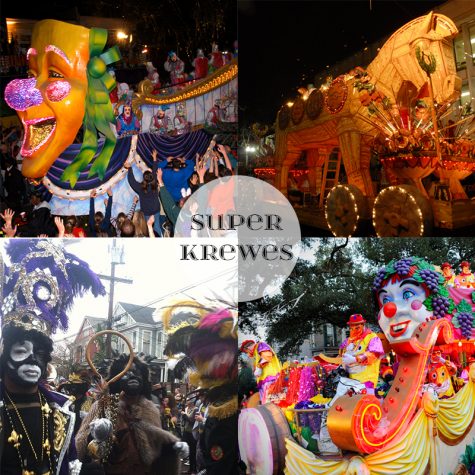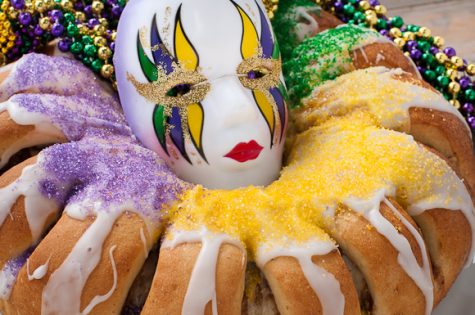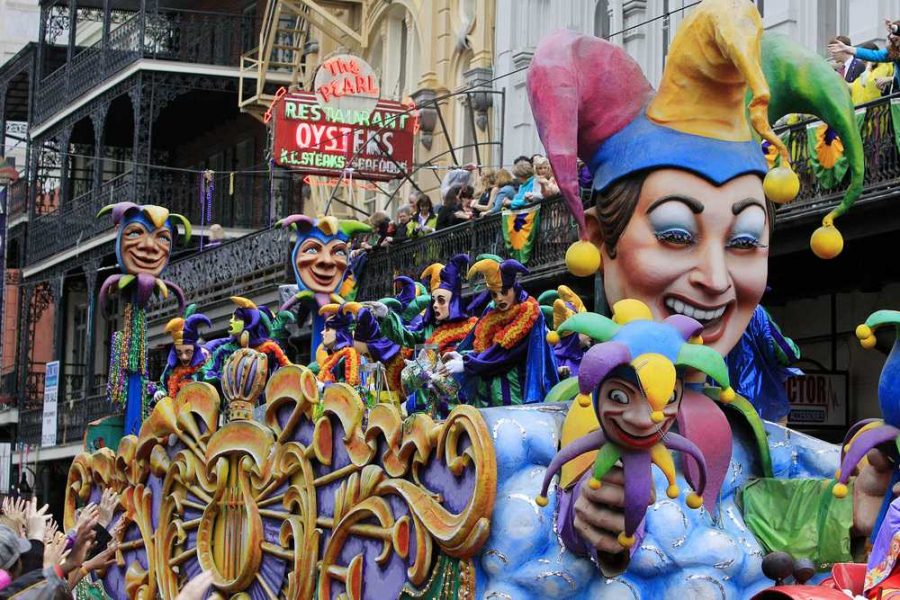What is Mardi Gras?
Courtesy of darkroom.baltimoresun.com
Floats fill New Orleans on Mardi Gras.
March 10, 2017
Mardi Gras is probably one of the most important holidays in New Orleans, but not many people know much about it in other parts of the United States. Taking place every year at the end of Carnival, it’s a time of celebration, excitement, and undeniable craziness. This year, New Orleans hosted its 160th anniversary of the celebration of Mardi Gras.
To participate in Mardi Gras, it’s helpful to know a bit on how it all works. Every year, Mardi Gras makes millions of dollars since its main entertainment are the parades organized by krewes, or non-profit clubs. These are the people who make the floats and each krewe organizes their own parade to showcase on Mardi Gras. Usually the theme is top secret and not revealed until the actual parade. Each krewe has a new king and queen chosen to reign over the parade, and sometimes, even celebrities are asked to join. As it parades down, floats with different designs, bands, dances, etc., are performed as the members of the float throw beaded necklaces and doubloons, coins with the krewe’s emblem. Kyle Kvenvik (10) comments, “Mardi Gras seems like an exciting and unique experience. I think it would be fun to participate in all those events.”

All the krewes have their own themed float parades throughout New Orleans.
Many interchangeably use the terms Carnival and Mardi Gras, but they are indeed different. To explain this, it is easier to know a bit of background about Mardi Gras. Originally, it came from ancient Rome’s celebrations in the winter. When Christianity came about, the Church converted these celebrations into the Christian Calendar, calling them the Twelve Days of Christmas lead by the King of Misrule, an unplanned king of festivities. During these celebrations, coins were given out. Italy, France, and England began to have masked balls to celebrate the twelfth night. During the balls, a “king cake” would be brought out with a coin or a bean hidden inside. The finder would be crowned the king of the party and would choose his queen. The French eventually came to call it Mardi Gras, “fat Tuesday.” Mardi Gras was first brought to the United States when French explorer Sieur Iberville came to set up camp near what would become New Orleans. He brought the carnival customs with him, which brought balls to the streets of New Orleans. Carnival starts on January 6th after Christmas with many celebrations, eating, parades, and balls. Mardi Gras ends Carnival and Lent begins the next day. Since Mardi Gras is right before Lent, people tend to eat and party as much as possible before Lent starts.

King’s cake is traditionally eaten on Mardi Gras.
One of the most important parts of Mardi Gras is the costumes. People usually dress up in costumes or at least wear purple, gold, or green. Masks are essential to wear during Mardi Gras, even if they are simple. Kings cake is also an important aspect of Mardi Gras. Usually, it is a Danish cake with some sort of sweet filling, topped with purple, green, and golden sugars and icings. Inside each is a small baby Jesus. The tradition is whoever gets the baby Jesus must host the next party and bring the next cake. Overall with its crazy history and events, Mardi Gras combines many world cultures and allows people to go crazy.
Sources: mardigrasneworleans.com, neworleanscvb.com






































